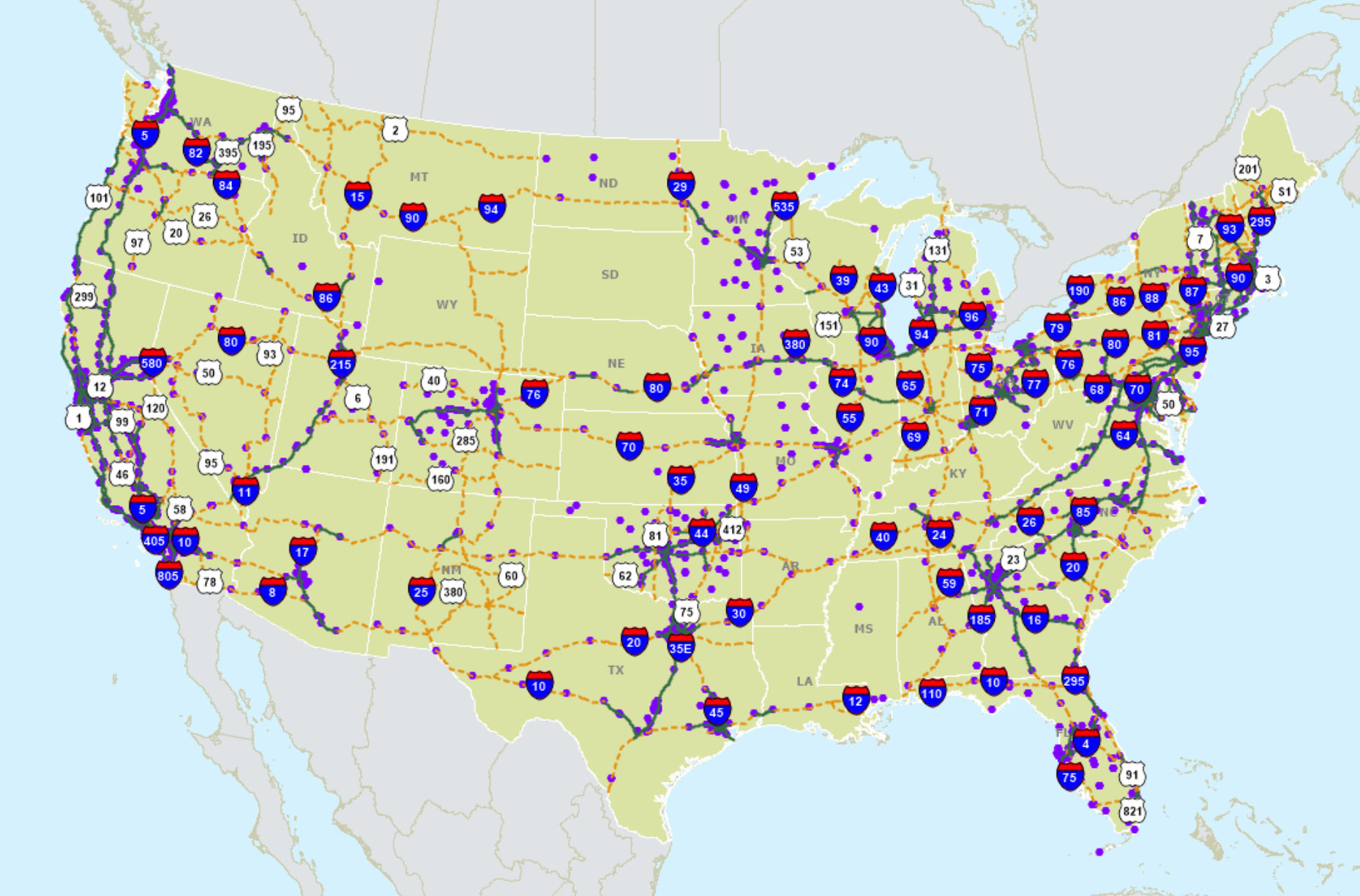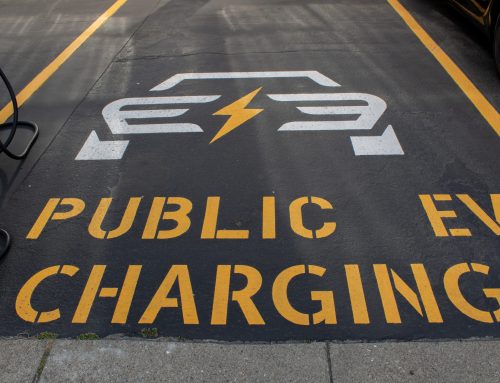
Map of the mainland United States. The green denotes “corridor ready”, and the orange denotes “corridor pending”. Purple dots denote fast charging. Source: FHWA.
|
There is $7.5 billion available for EV public charging in the Infrastructure Investment and Jobs Act (IIJA) – $5 billion for the National Electric Vehicle Formula Program and $2.5 billion for the Grants for Charging and Fueling Infrastructure. In the text of the Act, the $5 billion for the National Electric Vehicle Formula Program specifies that “any electric vehicle charging infrastructure acquired or installed … shall be located along a designated alternative fuel corridor.” The same is true for 50 percent of the Grants for Charging and Fueling Infrastructure (the remaining 50 percent will go to community grants). Given the importance of these corridors, it is worth brushing up on some key facts. What are the National Alternative Fuel Corridors? The corridors are designated by the Federal Highway Administration (FHWA) and are designed to support a network of electric vehicle charging stations as well as hydrogen, propane, and natural gas fueling infrastructure. States, local officials and other experts nominate where they think these Alternative Fuel Corridors should go. There are two types of corridors – ready and pending. Ready means that the corridor has adequate charging and fueling capability. Pending means that there may be some charging and fueling infrastructure, but it is not at the “right frequency or locations” to earn the designation. How far between chargers? For the corridor to be “ready”, the EV charging must be less than 50 miles apart and less than 5 miles off a highway. So states have to spend IIJA charging funding to build out the Alternative Fuel Corridors? Not necessarily. According to the Act, for the $5 billion formula funding, “if a State determines, and the Secretary certifies, that the designated alternative fuel corridors in the States are fully built out, then the State may use funds provided under this paragraph for electric vehicle charging infrastructure on any public road or in other publicly accessible locations, such as parking facilities at public buildings, public schools, and public parks, or in publicly accessible parking facilities owned or managed by a private entity.” For the $2.5 billion funding, it is a little less prescriptive but the Act notes that for 50 percent of the funding, charging must be placed, “along designated alternative fuel corridors or in certain other locations”. What are the origins of the Corridor? The Fixing America’s Surface Transportation (FAST) Act, signed into law in 2015 by President Obama, required the Secretary of Transportation to designate the Corridors. Where has the funding come from so far? Funding in 2020 and 2021 came from the Surface Transportation Block Grant Program. So how many chargers are we talking? As of April 2021, there were 38,000 EV charging stations with 79,000 charging outlets (the vast majority are L2 stations). What happens next? The Department of Energy is set to release guidance on the program in early February that is intended to help States and territories “strategically deploy electric vehicle charging infrastructure.” This guidance should shed some more light on the program and give direction to States to develop their implementation plans. Next, the Department of Transportation has until November 15th to establish the $2.5 billion competitive grant program. |


